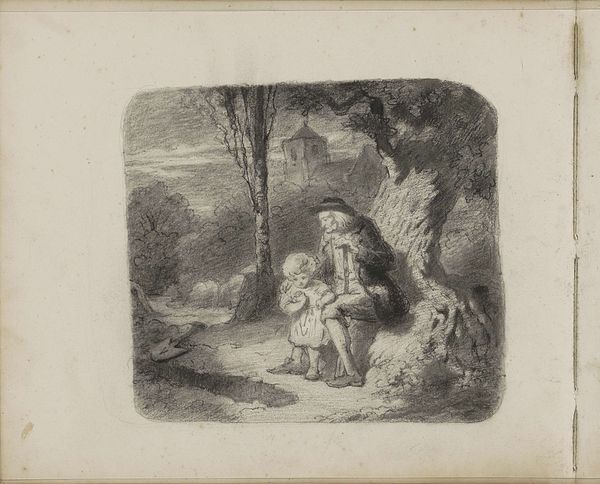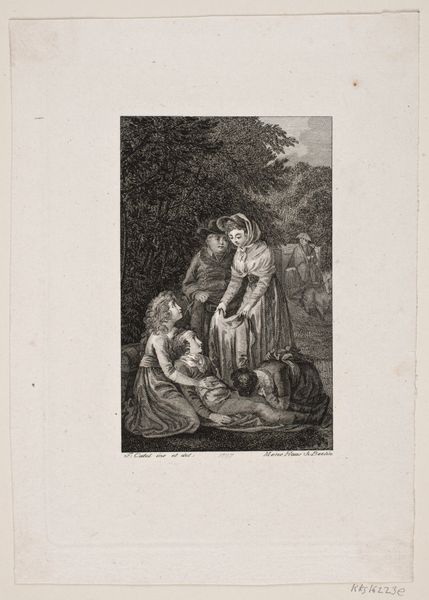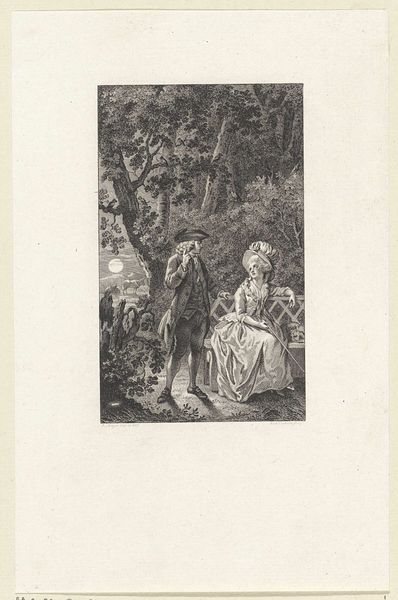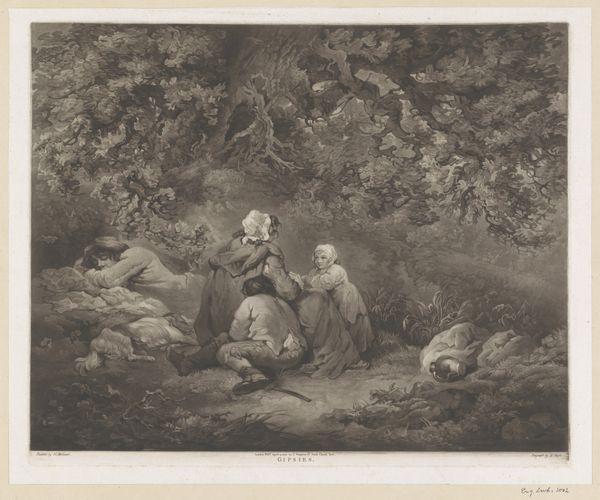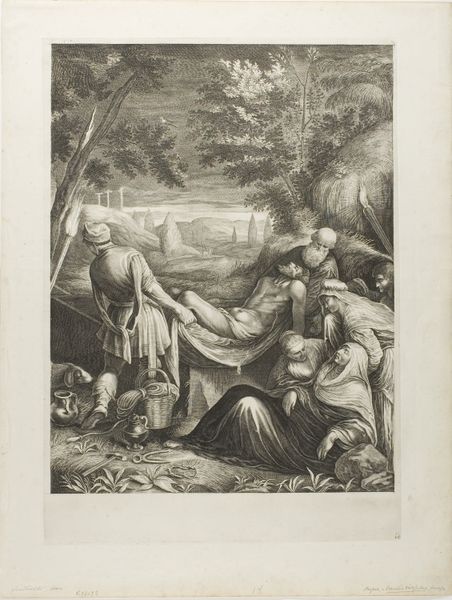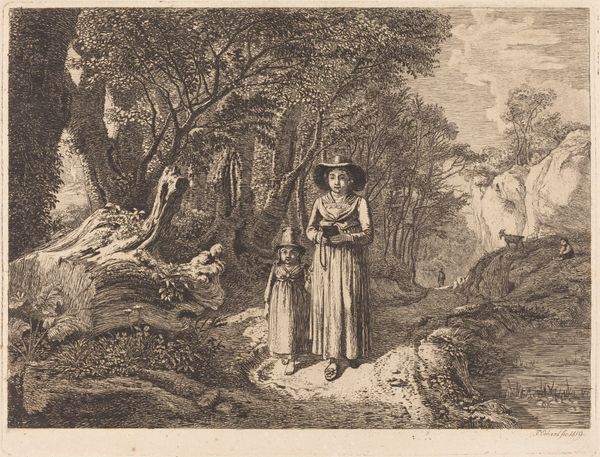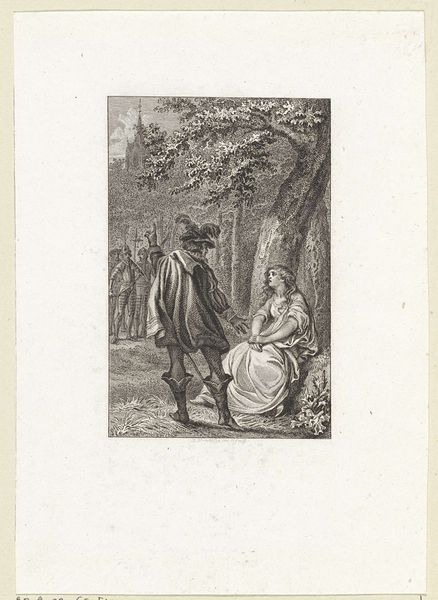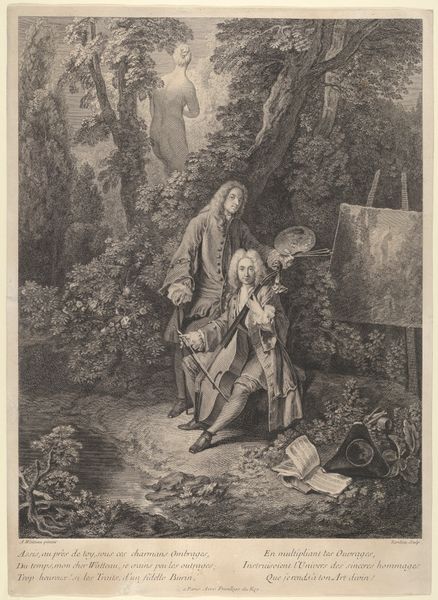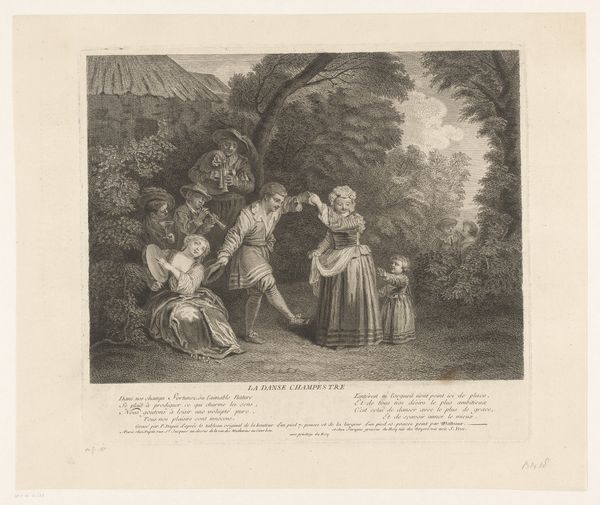
Uitvinding van de boekdrukkunst door Coster, ca. 1440 1851 - 1853
0:00
0:00
Dimensions: height 230 mm, width 184 mm
Copyright: Rijks Museum: Open Domain
Editor: Here we have Johann Wilhelm Kaiser’s "Invention of the Art of Printing by Coster, ca. 1440," created between 1851 and 1853. It’s an engraving that feels very… still. Almost like a captured breath. What catches your eye, Professor? Curator: That stillness is brilliantly observed. I sense it too – it’s the pivotal moment just *before* the world changed. Kaiser invites us to imagine this scene; a man hunched in thought, tools scattered around, the forest eavesdropping… a lovely sense of hushed potential. Don't you feel the artist inviting us to eavesdrop on a deeply intimate moment, a birth, an epiphany perhaps? What do you make of the faces? Editor: They look almost reverent, the children especially. As if they understand the weight of the moment, even if they don’t grasp the mechanics. It feels romanticized. Is it? Curator: Absolutely! The Romantics *loved* origin stories, those solitary flashes of brilliance that changed history. They have the weight of myth, don’t they? Kaiser presents Coster, not just as an inventor, but as a visionary. And consider the location. This isn’t a bustling workshop; it’s a natural, almost sacred space. A hidden glade… it’s like the idea itself sprung from the very earth. Almost Biblical, the sower of the word, would you say? Editor: So it’s not just about historical accuracy, but about elevating the act of creation? Curator: Precisely! He's capturing the *essence* of invention. That spark of genius and what could come of it. Editor: Fascinating. I initially saw stillness, but now it feels more like a charged silence, pregnant with possibility. Curator: Indeed. Art often invites us to reconsider our first impressions. The surface is but a door!
Comments
No comments
Be the first to comment and join the conversation on the ultimate creative platform.
